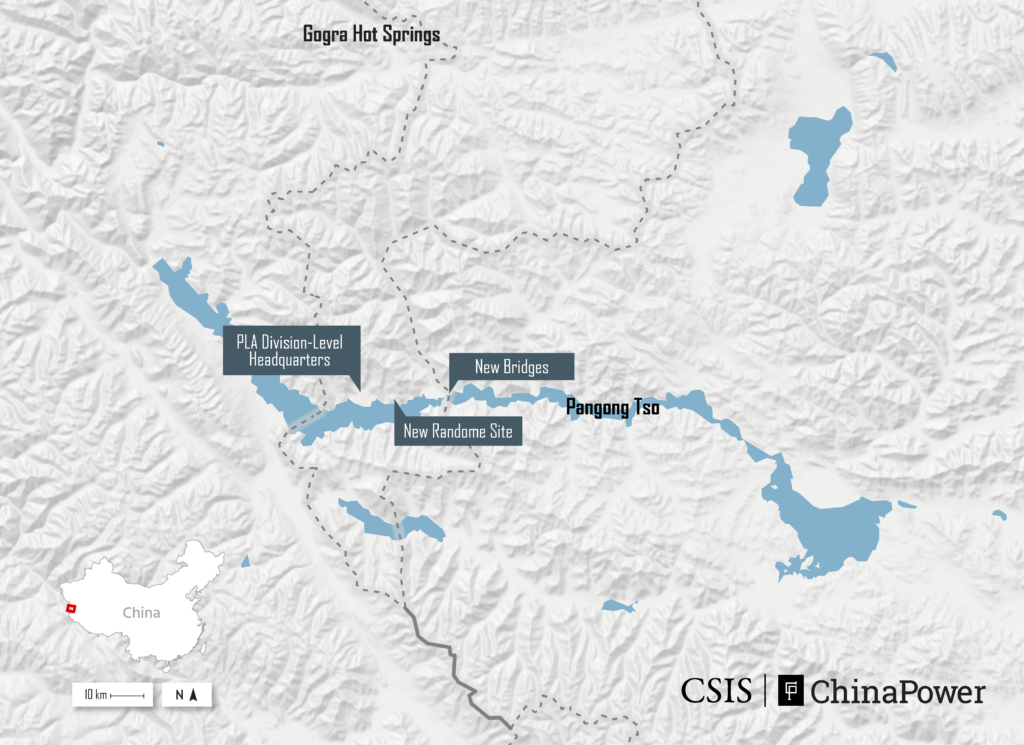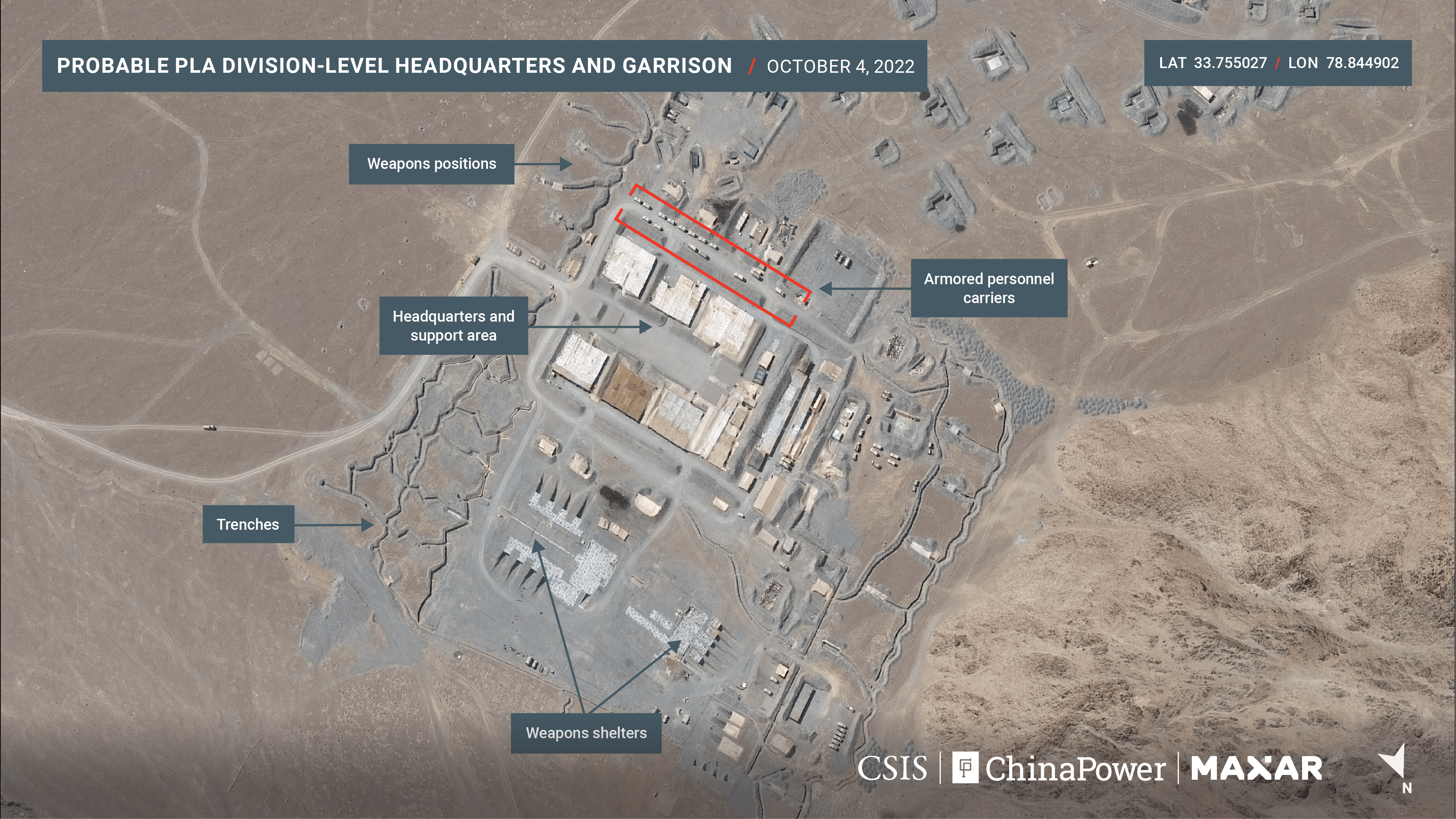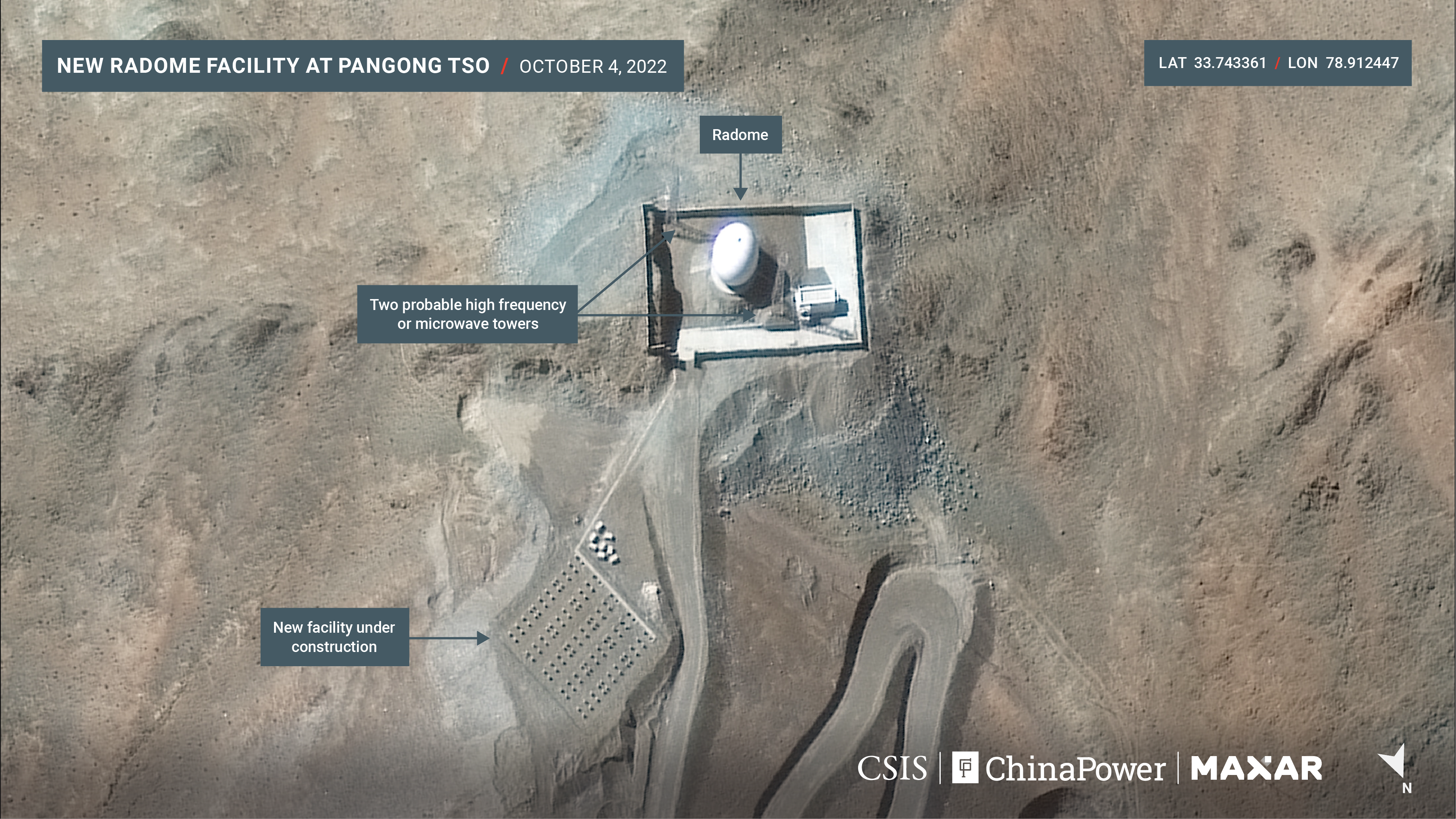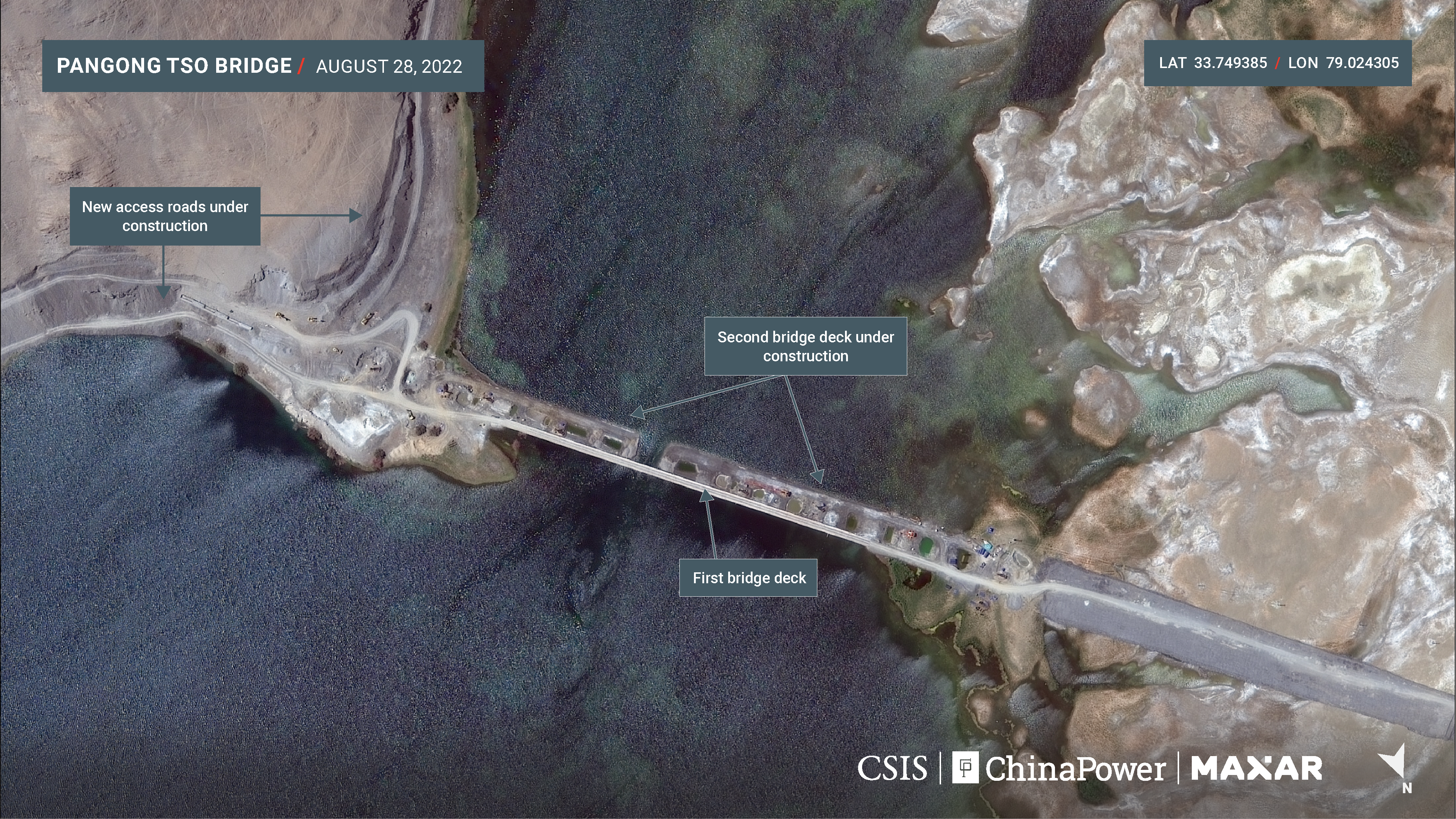By Matthew P. Funaiole, Brian Hart, Joseph S. Bermudez Jr., and Jennifer Jun
November 28, 2022
China’s recent willingness to tamp down tensions with India at their disputed Himalayan border belies Beijing’s broader strategic ambitions in the region. In September 2022, the two regional powers mutually began to move their troops back from key positions along the hotly contested Line of Actual Control (LAC) near the Gogra Hot Springs. Yet neither side is engaging in a broader pullback. In fact, satellite imagery reveals that China is investing in a significant, long-term military presence near Pangong Tso, a remote lake that straddles the LAC just 50 kilometers south of the Gogra Hot Springs.

Click to enlarge.
Pangong Tso leapt to the foreground of China-India tensions in May 2020, when intense clashes erupted there between troops along the LAC. The fighting resulted in dozens of casualties and was soon followed by deadly clashes in the nearby Galwan Valley—the first combat deaths along the border since a major border conflict in 1967. Tensions have continued to simmer at Pangong Tso since 2020, and both sides have retained a presence in the area.
Among the most notable Chinese developments at Pangong Tso are what appear to be new division-level headquarters and garrison that likely support a considerable number of People’s Liberation Army (PLA) troops stationed around the lake. The headquarters facilities, which are situated on Indian-claimed territory just six km from the LAC, evolved from encampments that popped up amid the 2020 standoff. Chinese troops originally set up a camp at the site in May 2020 before razing and replacing it with a more permanent fixture in June 2020. This new facility then continually expanded and developed throughout much of 2021.
Satellite imagery from October 4, 2022, shows that work is completed and that the site now boasts a significant PLA presence. At its center are headquarters and support buildings, which are flanked by a bevy of trenches and revetments for storing and securing equipment. On the south side are numerous shelters for weapons—likely artillery and anti-aircraft systems. The northern portion shows a full company of armored personnel carriers (APCs), as well as vehicle shelters and additional weapons positions.
This facility represents a considerable upgrade in the PLA’s presence in one of the most remote and inhospitable spots on the globe. It serves as a new node connecting troops at Pangong Tso with military authorities elsewhere in the PLA Western Theater Command, which is headquartered thousands of kilometers away and is responsible for military operations on China’s western frontiers. The facility’s considerable armament of equipment and weaponry could prove critical in a future skirmish or conflict with India. The APCs and other vehicles stationed there could rush troops to key locations along the lake and the facility’s howitzers and air defense weapons could be called upon to hold or advance PLA positions.

Other PLA-related work is also underway. Approximately six km east of the headquarters facility, a new radome is being constructed on a mountain peak north of the lake. This new radome supplements another radome site that was constructed directly on the banks of Pangong Tso sometime before 2016. It is unclear what is inside the protective radome, but given its location and setup, the PLA could employ it for signals intelligence (SIGINT) collection, satellite communications, or radar.
Initial work on the new radome facility kicked off in August 2021 with the construction of roads and supporting infrastructure. Construction of the facility itself began in late 2021. Satellite imagery from October 4, 2022, shows that the site now consists of a radome, two tall high-frequency radio or microwave towers, and a support building. Construction work has also begun on the foundation of an additional structure nearby, which could be barracks or an operations facility to support the existing facility, or it could be another radome facility altogether.


Finally, 10 km east of the new radome site and 23 km from the LAC, construction work continues on a bridge that will significantly improve the PLA’s ability to move troops and equipment across the lake. In March 2022, CSIS published satellite imagery and analysis of the bridge, which showed that workers had nearly connected its deck from the northern shore to the southern shore.
Satellite imagery from August 28, 2022, shows that the deck now connects to the southern shore and that workers are making progress on the roads connecting both sides of the bridge. Notably, by April–May 2022, the deck bridge and southern approach were complete enough to allow construction equipment and vehicles to cross and to provide a limited capability for Chinese military forces to cross in an emergency.
Work is also underway to build a second bridge deck alongside the existing one. Once completed, the secondary deck will enable greater traffic flow in the area and could potentially add redundancy such that the bridge could be more survivable in the face of an attack.

Taken together, China’s continued investments at Pangong Tso amount to a significant and concerted deepening of the PLA’s presence near the border. China and India may be making commendable progress to defuse tensions at the Gogra Hot Springs, but China’s activities at Pangong Tso make clear that Beijing is not contemplating a broader retreat from the border. The PLA is deepening its foothold and readying itself to fight if called on to do so.
For in-depth analysis of Chinese developments along the China-India border, explore this ChinaPower feature.

